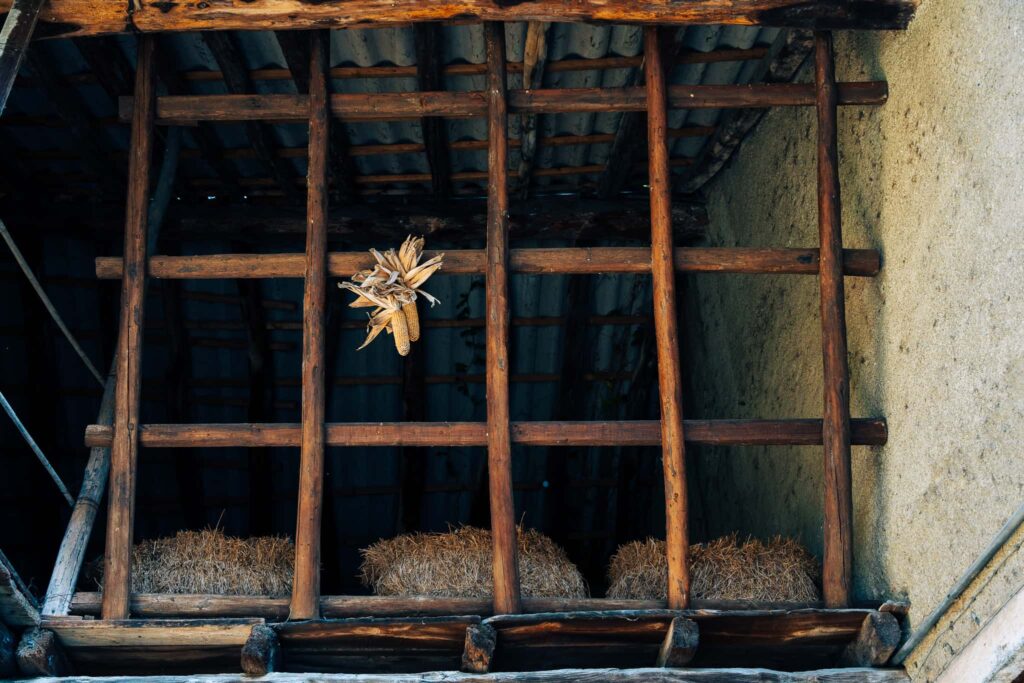Access to the Court has always been through a portico adorned with a wooden ceiling (it was a marketplace between the 19th and 20th centuries) and a loggia above. The design of the Court, which was a marketplace between the 19th and 20th centuries, is that of a typical Lombard farmstead: closed, quadrangular and U-shaped.
In the northern section, everything points to the original complex’s construction dating back to around 1400. The ground floor areas along the western and southern sides served as stables and the upper floors as barns.
Notably, a date is inscribed on one of the west-facing pillars: 1883, thought to be the year the farmstead and the stables below were built.
To the north, on the side of the dwellings, stand the classic wooden galleries (now partly made of iron), which served as a corridor for the rooms that still face each other, as well as for drying agricultural produce.
“In those days”, life here, much akin to life in other courts, formed the cornerstone of family life and sustenance.
Domestic animals, chicken coops in the centre, stables on the sides with manure stacks outside (“la méda de liàm”), adult labour, children’s games, the industrious tranquillity of the elderly… Between the 19th and 20th centuries, the “Curt del Bèrghem” was characterised by: “la sculéta” and ”ul mercà” (the little school and the collection centre).
The ”sculéta” was a school for girls whose mothers went to the spinning mill. “Ul mercà”, is where products from the fields and gardens were collected, including the traditional “Cucumer de Garlà”, which were brought here by farmers for later sale.
The fountain: the water from this fountain comes from “Mujaca”.
Throughout living memory, it served as a vital source for drinking and all household needs. It was used as a communal washing spot for the women residing within the Court and neighbouring Courts. By evening, it transformed into a public bath.
Especially on Monday mornings and at peak times, it was considered a meeting point where women would exchange news and updates about the village as they washed.
There were two families in the Court: “Chi del Còm”, corresponding to the Polvara surname; “Chi del Bèrghem”, corresponding to the Longhi surname.These two surnames still exist in the village today and are believed to trace their roots back to 18th-century families hailing from Como and Bergamo.
A memoria d’uomo sempre servita come fonte per bere e per tutti gli usi domestici. Serviva
per lavare a tutte le donne della Corte e a quelle delle Corti vicine; la sera poi diventava bagno pubblico.
Era punto di riferimento, soprattutto il lunedì mattina, e in occasione delle ore di punta; mentre si lavava, ci si scambiavano informazioni e le “ultimissime” sulla vita del paese.
In Corte c’erano due famiglie: “Chi del Còm”, famiglia corrispondente al cognome Polvara; “Chi del Bèrghem”, famiglia corrispondente al cognome Longhi.
Questi due cognomi sono ancora ricorrenti in paese; si pensa si riferiscano a gruppi familiari di antica origine settecentesca, provenienti da Como e da Bergamo.


